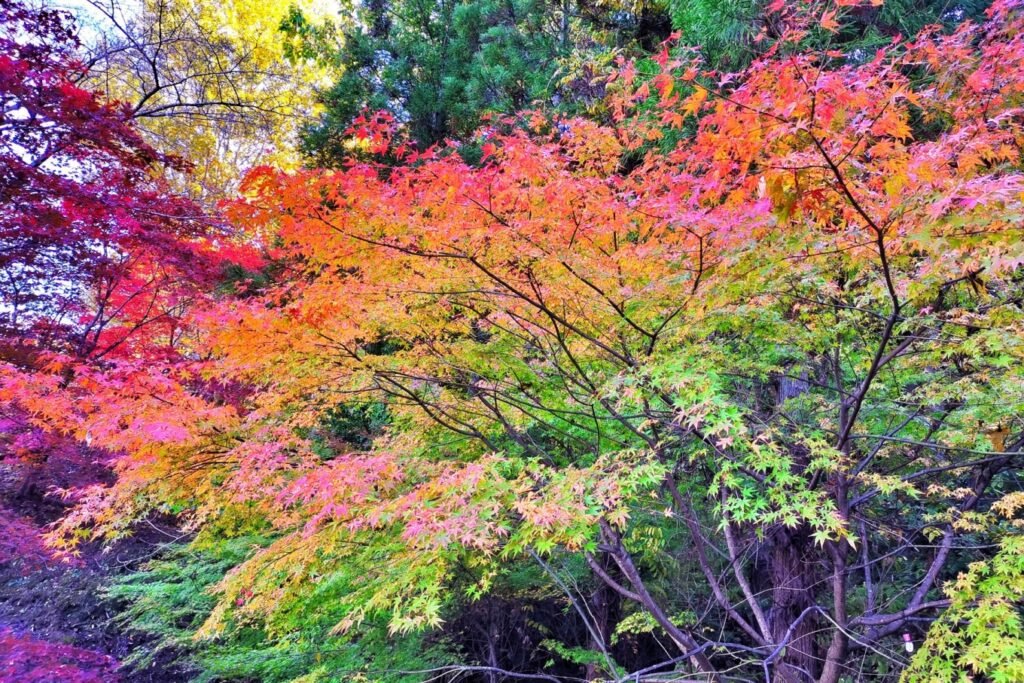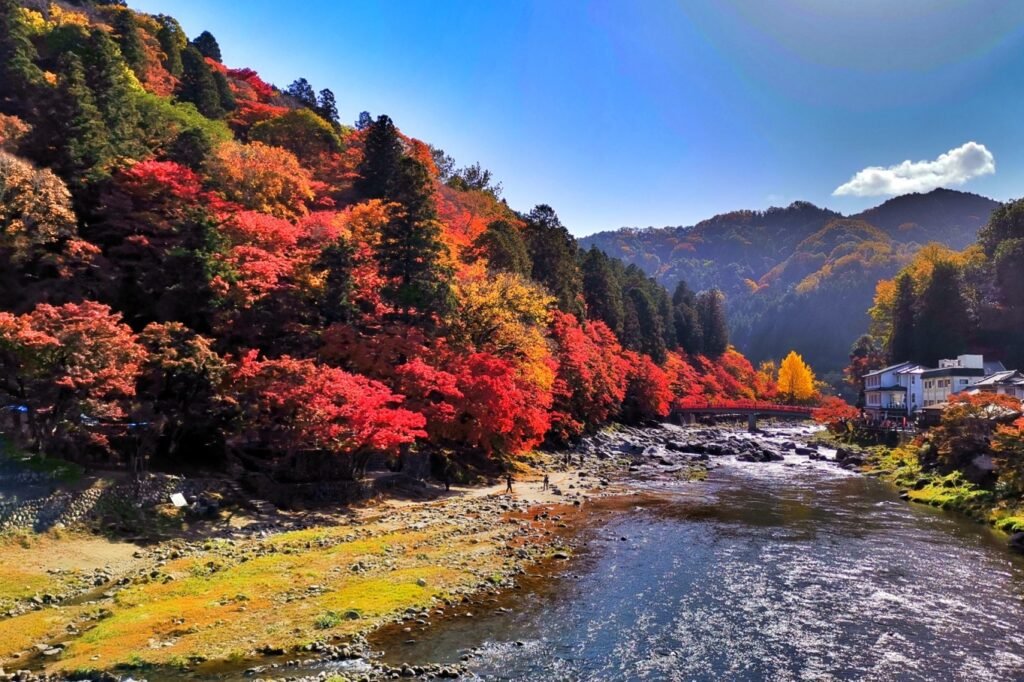Korankei, a name pieced together yet captivating, has become an iconic destination. Previously an obscure place, it now attracts visitors from near and far. As someone who had visited Japan multiple times before, I hadn’t heard of it until planning this autumn trip. It’s understandable, as Korankei is neither an ancient city nor a grand landscape—it is simply a rural area bursting with the vibrant colors of autumn, where the wind and flowing waters harmonize to celebrate the season. Korankei is located in Asuke Town, Toyota City, Aichi Prefecture, within the area known as Oku Mikawa. The name “Korankei” itself is a combination of two characters: “Kō” from the local Kojakuji Temple and “Ran” from Arashiyama in Kyoto, creating a name that is both pleasing to the ear and evocative.
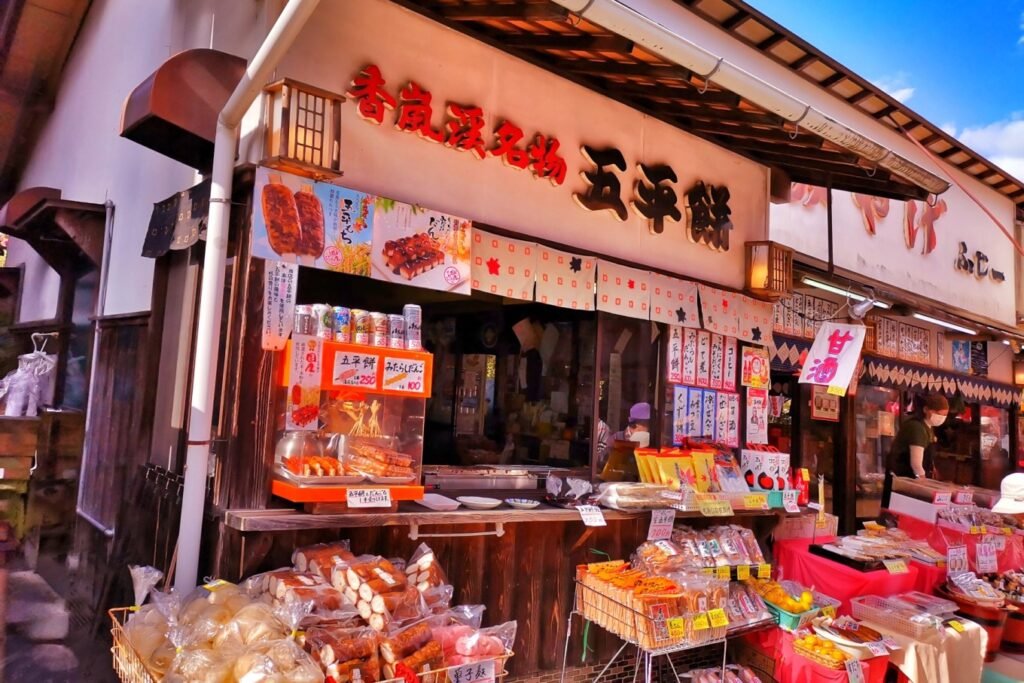
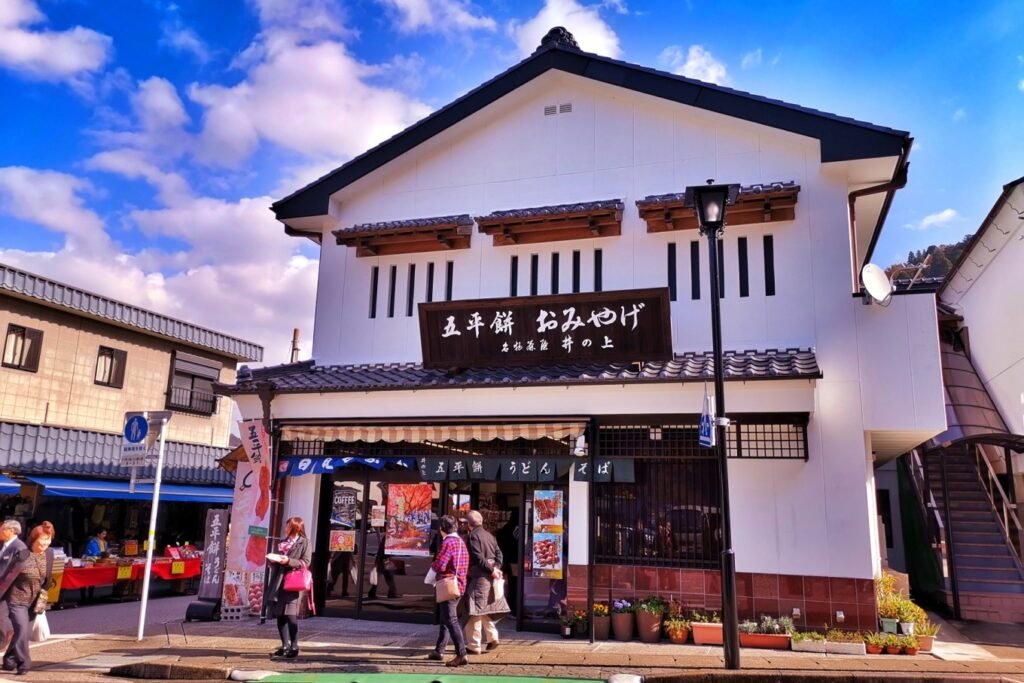
Historically, Korankei was once a prosperous area. It was originally called the Yahagi River’s tributary, Bakawa. Surrounded by steep mountains, this river basin naturally became a vital transport hub for Japan’s central mountainous region, connecting inland areas with coastal towns. Whether traveling to Shinshu, Mino, Nagoya, or Okazaki, all roads converged here before diverging to various destinations. During Japan’s Warring States period, the area bustled with traffic and trade, especially the transport of salt, making it a central artery for commerce. Goods, including the famed “Asuke salt,” were repackaged here for further distribution, enriching the local economy. This prosperity led to an increase in religious activity, as pilgrims flocked along the ancient Zenkoji Road, further enhancing the area’s reputation.
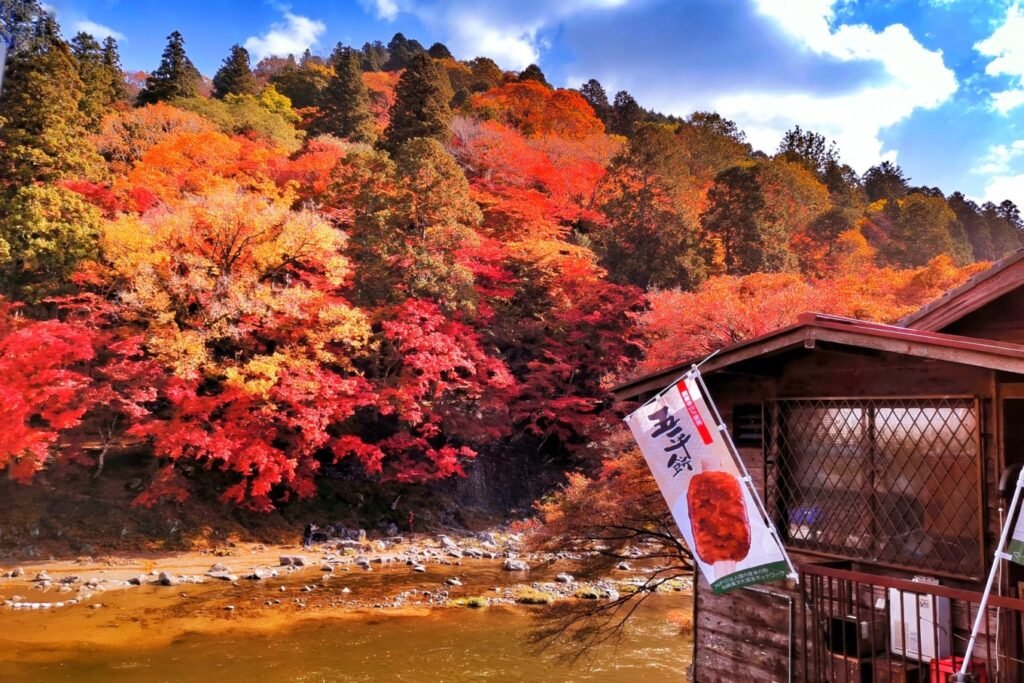

However, the Meiji Restoration and the construction of new railways reshaped Japan’s transportation network, leaving places like Korankei sidelined and forgotten. Without the salt trade, the region’s economy quickly declined. It wasn’t until the 1980s that local efforts to revive tourism brought Korankei back into the public eye. By leveraging its natural beauty and preserving historical sites, the area slowly regained prominence. Today, Korankei’s autumn foliage has made it one of Japan’s most sought-after destinations for leaf-peeping.
The magnificent autumn forest of Korankei perfectly embodies the old saying, “One generation plants the trees, another enjoys the shade.” It is said that the first maple tree along Korankei’s riverbank was planted in 1634 by Zen master Sanei, the 11th abbot of Kojakuji Temple on Mount Iimori. This humble beginning set a precedent, and over the years, others followed suit, planting more trees along the valleys and mountain streams. From the late Taisho period through the early Showa era, local enthusiasts continued the effort, planting eleven different species of maple trees—over 4,000 in total—along the banks of the river.
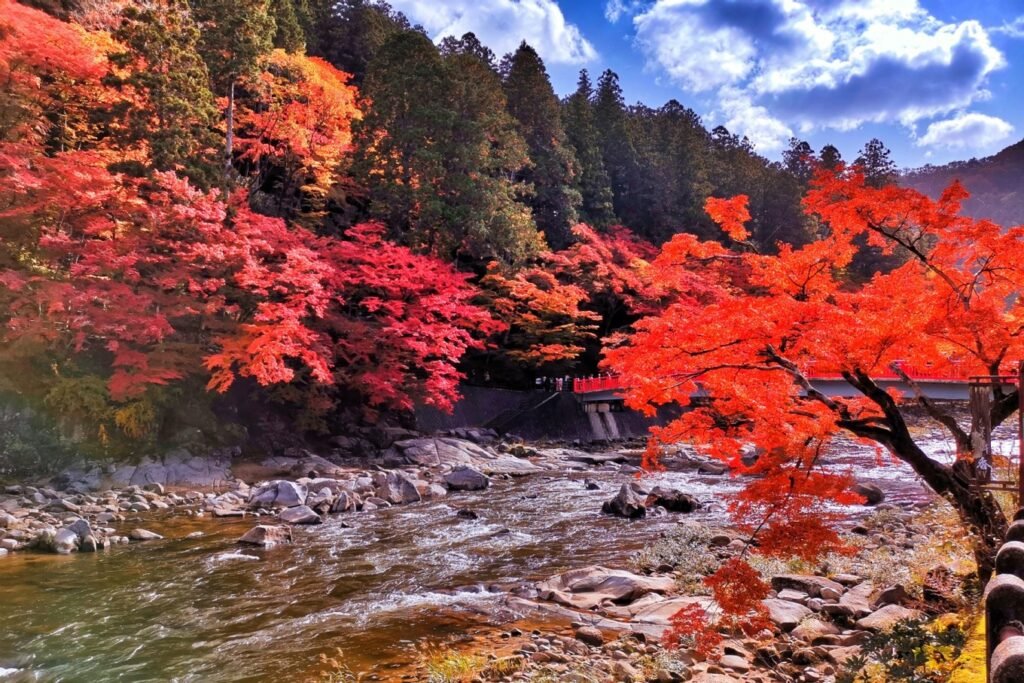
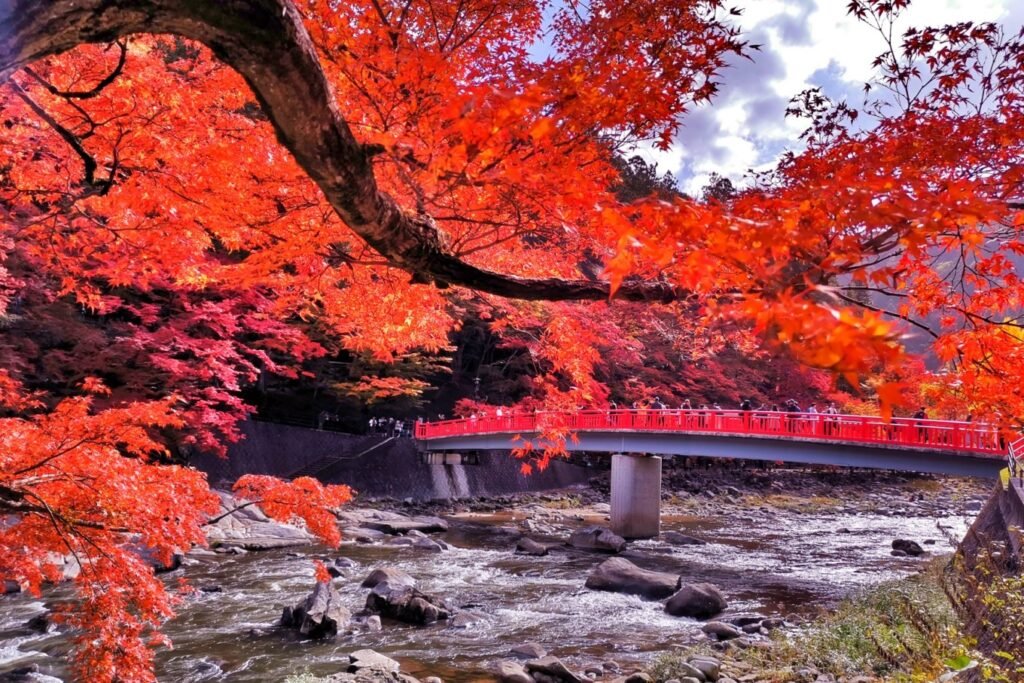
The forest now stretches from Kojakuji Temple, across the slopes of Mount Iimori, all the way to the confluence of Mount Bato at the Korankei Bridge. The trees form a vast, vibrant sea of colors that has grown into a famous natural spectacle. Late November is the ideal time to visit Korankei, when the autumn leaves are at their most dazzling. We joined the streams of visitors coming from all directions, starting at the Tsukihashi Bridge and leisurely making our way toward the Korankei Bridge, admiring the breathtaking autumn scenery along the way.
The paths along the river meander up and down, at times descending into the valley and at other times ascending the slopes, weaving through a colorful forest of red and golden leaves. Immersed in the vibrant landscape, we hardly noticed the exertion of walking; instead, we savored the serenity and joy of the journey. Korankei indeed deserves its reputation as the premier autumn foliage destination in the Tokai region of Japan. Along the banks of the Bakawa River, the colorful forest sways with the breeze, scattering leaves across the landscape in waves of brilliant red and orange.
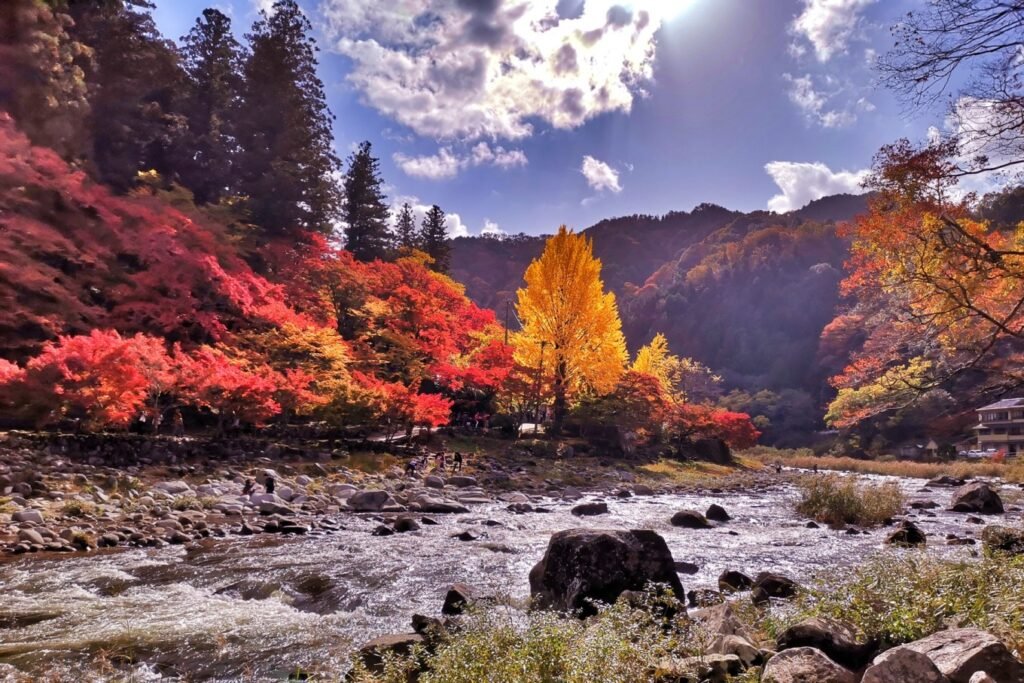
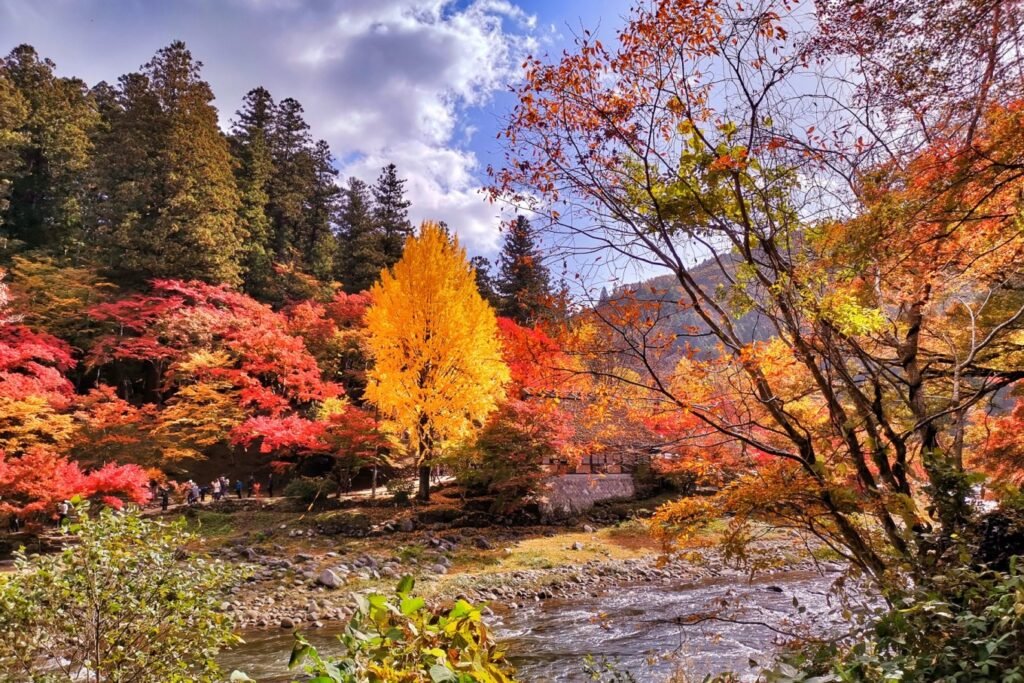
With crystal-clear skies, cool autumn winds, shimmering streams, and flaming red foliage, the scenery feels like a heavenly painting come to life. It captivates the heart and mind, leaving visitors spellbound, reluctant to leave. Truly, Korankei is an unparalleled destination for autumn appreciation.
Suddenly, we found ourselves in front of a group of Japanese-style historic buildings: the well-known San-shu Asuke Yashiki in Korankei. This complex of newly constructed buildings replicates the architectural style of the Meiji era, offering a glimpse into the grandeur of aristocratic residences in the Asuke region. The complex includes ancient-style houses, shops, and workshops, featuring structures like nagaya gates, main houses, storehouses, and old streets. It recreates the townscape of the early 20th century, preserving traditional crafts that have nearly vanished from modern Japanese villages.

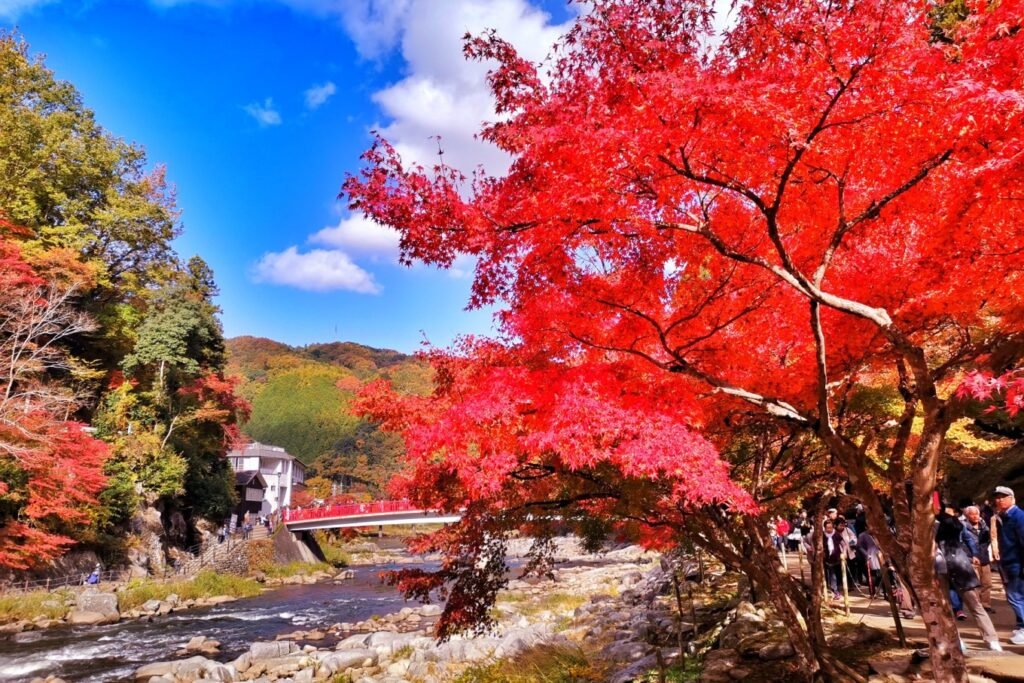
Visitors can watch artisans demonstrate skills such as blacksmithing, papermaking, and charcoal burning up close. Even more engaging, they can try their hands at traditional crafts, like weaving, indigo dyeing, papermaking, and bamboo crafting, immersing themselves in the simple rural lifestyle. It offers a chance to experience agricultural work and savor the self-sufficient way of living in harmony with nature. Essentially, this place serves as a hands-on folk museum, allowing visitors to personally engage with local culture.
Korankei also offers camping grounds, perfect for outdoor enthusiasts seeking adventure.

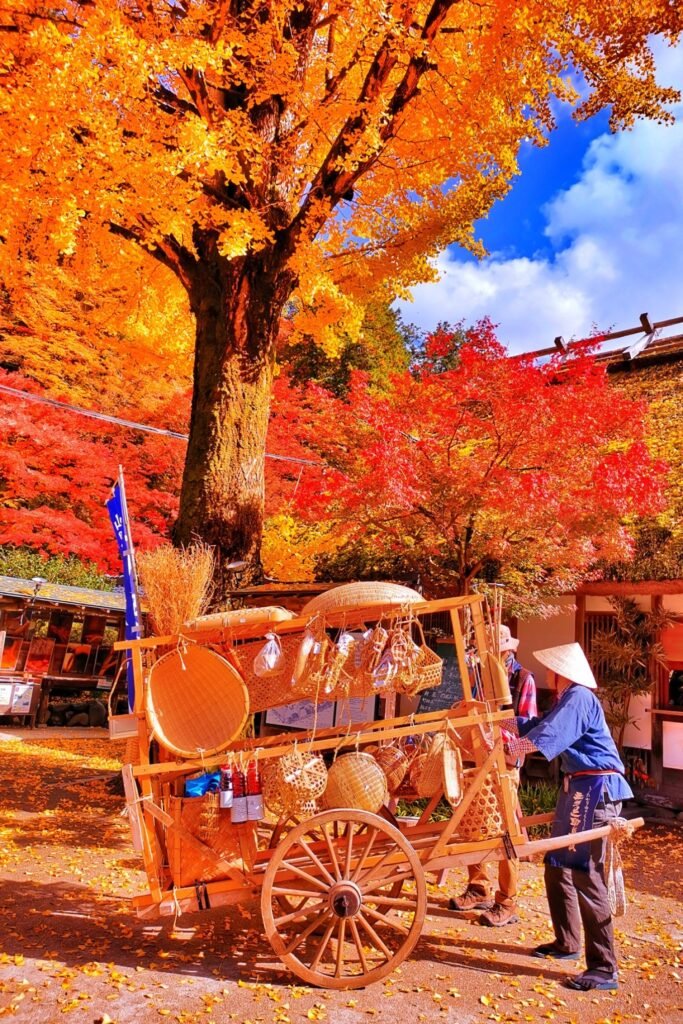
After finishing our tour of San-shu Asuke Yashiki, we continued toward Korankei Bridge. Crossing the bridge, we wound along the narrow paths by the stream, where colorful fallen leaves drifted with the water—red, orange, and yellow leaves floated downstream like a vibrant ribbon fluttering between heaven and earth. Amidst the scenery, we walked alongside countless visitors, listening to the rustling wind and feeling as though we were dancing in harmony with nature in a symphony of colors. This moment perfectly encapsulated the beauty of autumn in Korankei.
Taking advantage of our trip to Korankei, we also visited Obara, another area within Toyota City, to witness the renowned Four Seasons Cherry Blossoms. The park here is home to vast groves of cherry trees that bloom in both spring and autumn. Our visit coincided with the annual Four Seasons Cherry Blossom Festival in November, though we arrived toward the end of the bloom, with many blossoms already scattered on the ground. Nonetheless, the fleeting sight of cherry blossoms in late autumn, accompanied by vibrant maple leaves, was more than enough to fill our hearts with joy.
